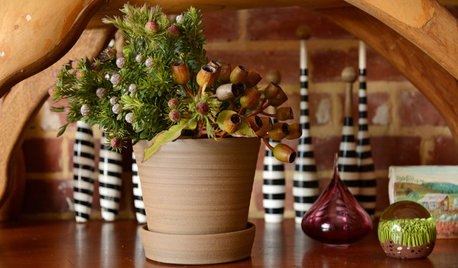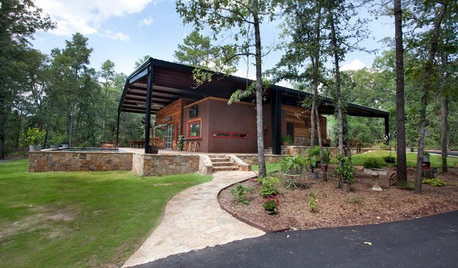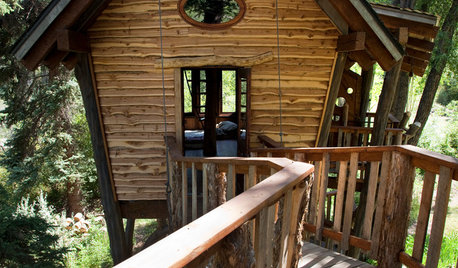Rhodies under Walnut trees
poodlepup1
17 years ago
Related Stories

INSIDE HOUZZInside Houzz: A Walnut Wall of Storage Opens Up a Kitchen
A 30-foot wall of storage frees up cooking areas and counters for food prep and entertaining
Full Story
HOLIDAYSHoliday Decorating: Natural Looks From Down Under
Native greens and craftsy touches give an Australian stylist's home festive flair with an organic feel
Full Story
HOME OFFICESThe Home Office Nook: File It Under 'Space Saver'
An entire room is often unnecessary these days. See how these homeowners carved out niches that work
Full Story
HOUZZ TOURSHouzz Tour: Under a Metal Canopy in Texas
New technology, reclaimed materials and an enormous protective roof combine in this Hawkins home for irresistible modern rustic charm
Full Story
HOUZZ TOURSHouzz Tour: Innovative Home Reunites Generations Under One Roof
Parents build a bright and sunny modern house where they can age in place alongside their 3 grown children and significant others
Full Story
HOLIDAYSChristmas Tree Decorating the Painless Way
Holidays are for carols, not cussing. Make tree trimming less work and more fun with this guide at your side
Full Story
TREE HOUSESTour a Fantastical Tree House for Kids and Adults Too
For an architect and a master woodworker, a magical tree house answers the question, ‘What would you do if you could do anything?’
Full Story
FALL GARDENING11 Trees for Brilliant Fall Color
Give your landscape the quintessential look of autumn with the red, orange and yellow leaves of these standouts
Full Story
HOUZZ TOURSHouzz Tour: Bright Outlook for a Midcentury Home in the Trees
Two designers lavish love on their 1968 house and create a cool haven in the Philadelphia suburbs
Full Story
HOUZZ TOURSHouzz Tour: Tree House Living Inspires Southern Home
Embracing nature but with comforts like a hanging hot tub, this South Carolina house lets the homeowners enjoy the best of both worlds
Full Story





rhizo_1 (North AL) zone 7
rhodyman
Related Professionals
Eden Prairie Landscape Architects & Landscape Designers · North New Hyde Park Landscape Architects & Landscape Designers · Port Royal Landscape Architects & Landscape Designers · South Elgin Landscape Architects & Landscape Designers · Taylorsville Landscape Architects & Landscape Designers · Jackson Landscape Contractors · Aberdeen Landscape Contractors · Brockton Landscape Contractors · Camp Verde Landscape Contractors · Damascus Landscape Contractors · Milton Landscape Contractors · St. Louis Landscape Contractors · Vashon Landscape Contractors · Wayland Landscape Contractors · Suisun City Landscape Contractorsconifers